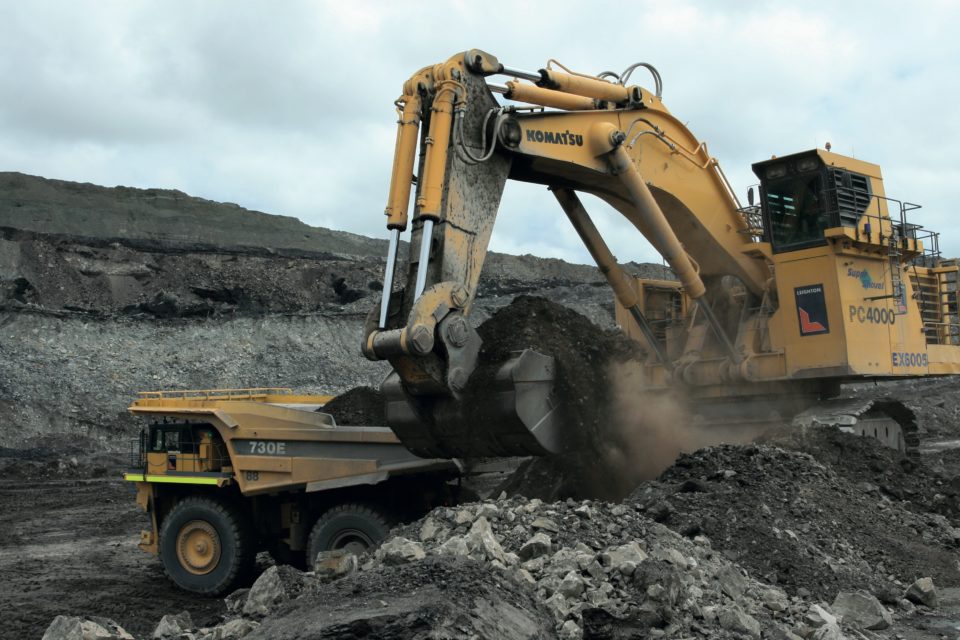For five years from 2011 the Rotowaro Coalfield and Opencast Mine extraction and overburden removal contract was taken over by Stevenson Mining (for state-owned Solid Energy). Before that the contract was with Aussie mining company HWE Mining, a subsidiary of Leighton Contractors.
In 2016 Solid Energy sold the site to Bathurst Resources and Talleys, around the time Fulton Hogan took over Stevenson Mining. Stevenson has a long mining history that began in 1948 at Kopuku Mine (since renamed Kopako). In more recent years the company has completed projects in Ohai, Coaldale and Macraes Mine in Otago.
The Rorowaro mine has been operated by Bathurst Resources for the past four years and
was getting toward the end of its life before being reprieved by Genesis (the owner of the Huntly power station) in 2018 when Genesis decided not to shut its coal fired generators down.
The majority of Rotowaro coal goes by overland conveyor to the power station and by rail to New Zealand Steel’s Glenbrook steel mill.
A long history of state ownership
As custodian of the country’s largest energy assets, Solid Energy used to be our biggest producer of export coal, half of which is used to make steel, both here and overseas (more than 80 percent of the exported coal is used by steel makers around the world – India being the largest market.
The company could trace it origins back to 1901 with the setting up of State Coal Mines and remained a government department until it became CoalCorp in 1987 and then Solid Energy – a state owned enterprise – in 1996.
Although Solid Energy diversified its product to the likes of wood pellets, coal seam gas and biofuels, coal still provided most of its revenue and cashflow before it collapsed in 2015 after successive government-driven schemes (such as biofuel) and falling coal prices left it unable to pay almost $400 million of debt. This was the end of over seven decades of state coal mining in New Zealand.
Solid Energy’s assets were sold to small companies and the biggest chunk went to a consortium of Bathurst Resources and Nelson-based food processor Talleys. They got the Stockton mine on the West Coast, and Rotowaro and Maramarua mines in the Waikato.
The main export business is at Stockton, which produces coking coal going to the Japanese and Indian markets for making steel.
A long history of coal production
The Rotowaro coalfield was first mined in 1915 with open cast mining starting in 1958. The neighbouring Huntly power station was built to be powered on coal or gas and, along with the Glenbrook steel mill, was calibrated for Huntly’s sub-bituminous coal. By the time Huntly was built, the Kupe gas fields of Taranaki had been discovered and Huntly ran on its gas until 2003 when those gas reserves started to decline, prices went up and Hunlty then reverted to coal.
Now, the majority of Rotowaro’s coal (at least 70 percent) travels by overland conveyor to the Huntly Power Station and by train (25 percent) to New Zealand Steel’s Glenbrook Mill closer to Auckland. The rest of the coal supplies industry and home heating markets in the North Island.
Whenever the South Island hydrogeneration slumps through low lake levels, the Huntly power station comes into its own as a baseload provider (delivering instant electricity to Auckland and the North on demand).
Unlike the long, flat coal seams in Australia, coal recovery is hard work in New Zealand because our 40 million-year-old coal seams are broken and divided by faults and seismic activity. Our geology makes us work very hard for our coal, which also provides our workers plenty of extra skills – if you can mine in New Zealand, they say, you can mine anywhere on the planet.
Rotowaro was underground mined right up until the 1980s when the coal resource was only eight metres down – and nine metres thick.
The opencast operation means a lot of overburden is stripped, which has been used to backfill former mined pits, and contoured to fit the surrounding topography and replanted for future use as pasture or forestry.
For instance, the Weaver’s Opencast Mine (1958-1993) restoration project was completed in 2006 to form a 54-hectare, 50 metre-deep lake bordered by wetlands and a mixture of pasture and recreational areas with walking tracks and mountain bike trails.
The lake took 11 years to fill naturally and the finished park was gifted to the Waikato District Council in 2007, who changed the name from Weaver’s Lake to Lake Puketirini.
Every year around 20 million cubic metres of overburden is handled to produced 1.8 million tonnes of quality, low sulphur and low ash coal.
The machines used for the job of removing and redistributing overburden and digging up coals seams are colossal – carried out by an army of excavators ranging in size from 120 tonnes to a massive 400-tonne Komatsu PC4000 that is worked almost around the clock.
Before it is used to produce electricity or steel the coal has to be ‘blended’ in a blending plant that can handle 800 tonnes an hour. Most of the coal is screened and crushed to 50mm, and then sorted by ash and sulphur content using a radioactive analyser. Out-going blends are loaded into 200 tonne truck bins and transported down a private road to a stockpile facility – where it is placed on an overland conveyor to the Huntly Power station, or loaded into 1200 tonne rail bins for New Zealand Steel.



